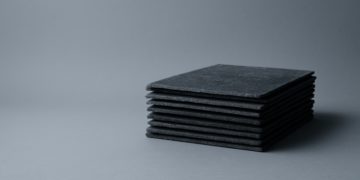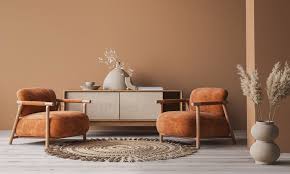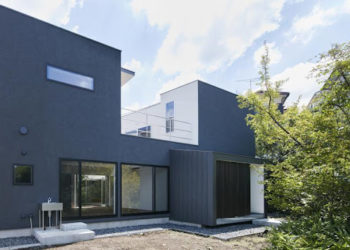Your home isn’t a showroom—it’s a story. And stories, at their best, aren’t written in identical sentences. The same principle applies to interior design. The most inviting homes often balance consistency with character, polish with play, and harmony with surprise.
That’s why the era of buying “furniture sets” is waning. Today’s most thoughtful homes feel curated, not coordinated. They blend materials, styles, and eras—without feeling chaotic. And yet, for many, the question remains: How do you create visual flow without everything matching?
The answer lies in cohesion, not uniformity.
Think in Themes, Not Twins
Cohesion comes from repetition of ideas, not objects. Instead of trying to match every finish or silhouette, think in terms of shared qualities:
- Repeated textures (e.g., velvet, linen, wood grain)
- Echoed colors (warm neutrals, jewel tones)
- Similar moods (rustic, minimalist, bohemian)
This allows you to vary shapes, sizes, and styles—while still maintaining a narrative. A brass lamp and a gold-framed mirror won’t “match,” but they’ll complement one another beautifully.
Rather than forcing symmetry, aim for a common language. Let your pieces talk to one another, even if they speak with different accents.
Layer with Purpose
A curated home often begins with a single standout piece. Maybe it’s a vintage sideboard, an abstract rug, or a sculptural light fixture. Once you’ve identified your visual anchor, you can build around it.
Layer in supporting furniture with intentional variety:
- Mix a sleek modern sofa with a handcrafted coffee table
- Pair a clean-lined dining table with eclectic chairs
- Add softness to angular pieces with round cushions or organic shapes
This layering process should feel gradual, like building a playlist rather than playing the same song on repeat.
Use Color to Connect, Not Control
Color is one of the easiest ways to tie together disparate elements. But rather than painting every room the same or buying only gray furniture, think more fluidly.
Choose a base palette—perhaps three or four tones—and weave them through each space in varying ratios:
- A navy throw pillow in the living room echoes a navy print in the hallway
- A terracotta vase in the kitchen reflects the earth-toned chair in the bedroom
- A green houseplant connects with an art piece across the space
This method allows each room (and each item) to feel independent while contributing to an overall tone.
Shoppers at What’s New Furniture often seek this kind of guidance when navigating color and cohesion—aiming to personalize their space without sacrificing harmony.
Don’t Shy Away from Contrast
Cohesion doesn’t mean sameness. In fact, a bit of contrast often highlights what you love most.
Try mixing:
- Soft with sharp (rounded ottoman next to a geometric bookshelf)
- Rough with refined (raw wood table under a crystal pendant light)
- Old with new (antique side chair next to a sleek leather sofa)
Contrast adds visual interest and dimension. It breaks up monotony and tells your visitors: This space was collected, not constructed.
Ground the Room with Repetition
While variety makes a space engaging, repetition makes it feel stable.
Choose one or two design elements to repeat throughout your home:
- Black metal accents
- Round shapes
- Mid-century wood tones
These anchors offer the visual cues your eye craves. They act like recurring motifs in a novel—subtle reminders that, even amid diversity, there’s a consistent voice guiding the story.
This approach is especially effective when browsing through a furniture store filled with choices. Repetition becomes your compass.
Curate Wall Art Like a Gallery
Wall art is often the wild card in home design. People buy what they like, without much thought about cohesion. But with a few simple tweaks, art can become the unifying thread in your design.
Try these ideas:
- Keep frame colors consistent, even if the content varies
- Stick to a single artistic style (all abstract, all photography, all black-and-white)
- Build a gallery wall with varied pieces but one unifying shape (e.g., all square formats)
If your walls feel unified, the room often follows.
Allow Breathing Room
One overlooked strategy in cohesive design is restraint. Not every wall needs a mirror. Not every corner needs a table. In a curated home, what’s left out matters just as much as what’s added.
Negative space gives your furniture a chance to shine. It keeps rooms from feeling cluttered and helps draw attention to your best choices.
Let one chair stand alone in a corner. Give your coffee table some space to breathe. Let blank walls act as visual pauses between bolder expressions.
Cohesion Is a Feeling, Not a Formula
Sometimes, cohesion comes down to a feeling—one that’s hard to measure but easy to recognize.
When you walk into a space and feel at ease, chances are the design flows well. That doesn’t mean every chair leg matches. It means the light, tone, spacing, and energy feel balanced.
Design isn’t just about rules—it’s about response. And the best designs are the ones that invite you to stay awhile.
Final Thought: Your Home Should Reflect You—Not a Template
Designing a cohesive space doesn’t mean copying a catalog or following a strict rulebook. It means curating elements that resonate with you, then arranging them in a way that supports both beauty and function.
You don’t need matching nightstands or a uniform set of chairs to create unity. All you need is a clear perspective, a few strategic repeats, and the confidence to blend rather than replicate.
In time, your home will begin to feel like what it truly is—a place built by your choices, your memories, and your ongoing story.












































































